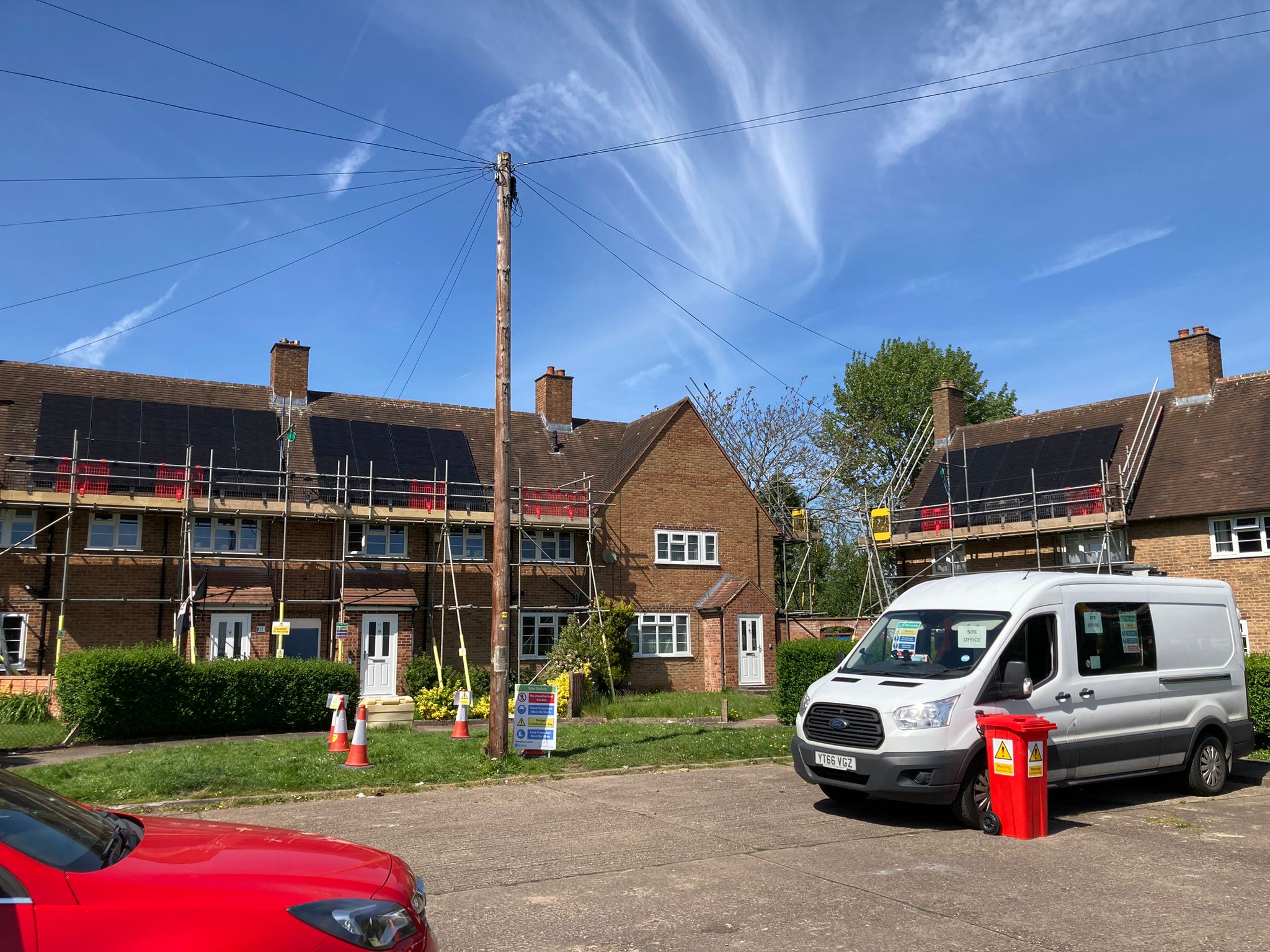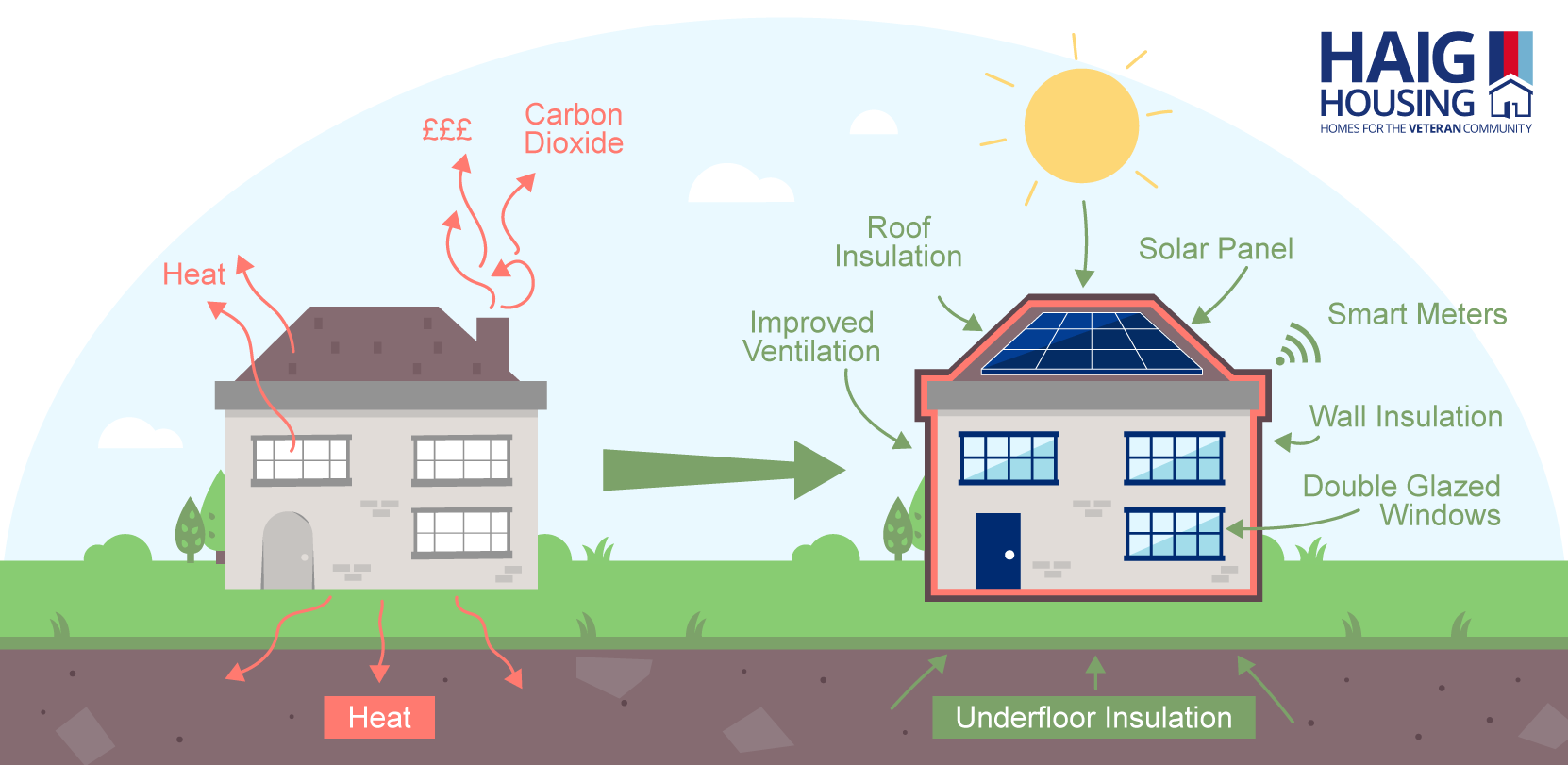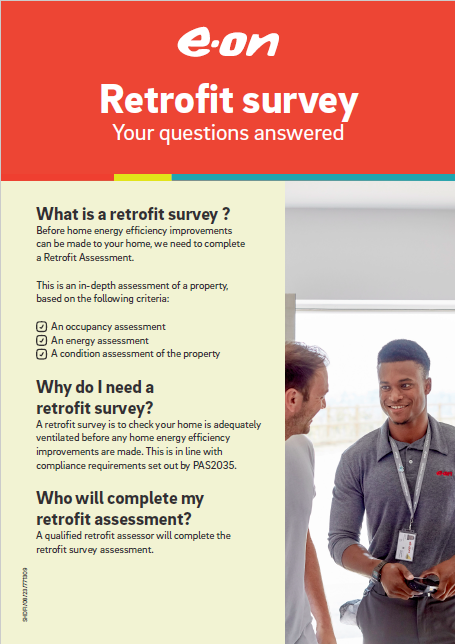We are building our capability towards Net Zero. We want to make all Haig properties more energy efficient, to make it more affordable for you to heat your home by using less energy.
Social Housing Decarbonisation Fund (SHDF)
Haig Housing has been successful in securing £2.6 million in funding from the Social Housing Decarbonisation Fund (SHDF) from the Department for Energy Security and Net Zero (DESNZ).
This is a real achievement for our team and our partners and it will help the Trust drive its ambitious strategy to reduce it’s carbon footprint and explore how to decarbonise all 1,500 of our homes.
The aim of the SHDF is to ensure social housing homes will have an Energy Performance Certificate (EPC) rating of C, by 2030 and will:
- deliver warm, energy-efficient homes

- reduce carbon emissions
- tackle fuel poverty
- support green jobs
- develop the retrofit sector
- improve the comfort, health and well-being of tenants
Haig is working in partnership with E.ON with the aim of keeping the disturbance to residents to a minimum. Working on a worst-first, fabric-first approach using measures such as external wall insulation, loft, cavity wall and underfloor insulation, some properties will also receive renewable technologies, such as solar PV panels.
What does Net Zero mean?
Net Zero for the UK means that the amount of carbon/greenhouse gases emitted by the UK minus any ‘offsets’ (e.g. carbon absorption through mass tree planting) or ‘capture’ (deployment of carbon capture technologies) equals zero, or better.
Reaching Net Zero in the UK
In 2019, the UK Government and the devolved administrations committed to the Net Zero target as recommended by the Climate Change Committee. Reaching Net Zero greenhouse gas (GHG) emissions requires extensive changes across the economy, changes which are unprecedented in scale.
The Government has legislated for the UK to reach Net Zero carbon emissions by 2050.
Why is this important?
As an estimated 26% of the UK’s carbon emissions come from our homes, housing providers have a key part to play in the road to Net Zero. Haig Housing is committed to taking the action needed to reduce our negative impact on the environment.
Our plan is to create warmer, more energy efficient homes as well as ensuring our operations are Net Zero by 2050 in accordance with Government guidance.
Haig has appointed E.ON as our delivery partner for the ‘sustainable homes’ element of this programme.

Retrofit Assessments
What is Retrofit?
Retrofit is simply the process of making changes to existing buildings so that energy consumption and emissions are reduced. These changes should also provide the benefit of a more comfortable and healthier home with lower energy required.
However, to achieve all of these, works need to be carried out properly with a bespoke plan and design and installed by competent, skilled tradespeople who work to high standards of technical competence and customer service, with good trading practices.
More information can be found here.
Rolling out the Retrofit Assessments
We will be rolling out retrofit assessments using E.ON’s contractors to locations across England. This is Wave 2.1 of the Social Housing Decarbonisation Fund (SHDF). We are currently working on the funding for wave 3 in order to extend the programme to the majority of our homes.
Devolved nations do not fall under the provisions of SHDF funding. However, our team is working hard to identify appropriate funding from the relevant authorities.
Next Steps
If your home is identified for support:
- You will be contacted to book in a retrofit assessment and a survey of your home. A session will be allocated to give you time to speak with the assessor to inform them of how you currently live in your home, how comfortable it currently is, and any concerns you have.
- We will then use the assessment to design and recommend the energy measures that will best make your home as energy efficient as possible, as well as ensure that your home is future-proofed.
- Once everyone is in agreement of the measures, we will book in the installation and inform you of what will happen before, during and after the installation.
What types of measures will be used?
External Wall Insulation (EWI)
This benefits properties built before the 1920s with solid walls. It involves fixing a thin layer of insulation material to the outside wall, then covering it with a reinforcement and a modern thin-coat render. Reducing your energy bills by keeping the heat in and the cold out.
Loft Insulation (LI)
Lofts can be insulated if access is easy and your loft joist are regular. We use rolls of mineral wool insulation. The first layer is laid between the joists – the horizontal beams that make up the floor of the loft – then another layer is laid at right angles to cover the joists and make the insulation up to the required depth.
Cavity Wall Insulation (CWI)
Cavity walls can be insulated by injecting insulation material into the cavity from the outside. The cavity is located between the inner and outer brickwork of the property. Cavity wall insulation (CWI) stores the heat within the inner walls, bouncing it back into the room and holding it for longer. It also works in reverse by keeping your house cooler in the summer months.
Underfloor Insulation (UFI)
Under floor insulation (not to be confused with underfloor heating) can be installed where the floorboards are suspended and there is a gap which can be insulated. Newer homes generally have ground floors made of solid concrete while older homes are likely to have suspended timber floors. Making sure your floor is suitably insulated will keep your property warm and help reduce your energy costs.
Solar PV (SPV)
Solar energy can be captured by thermal or photovoltaic (PV) panels to create heat or electricity. Solar panels work even on cloudy days and are becoming increasingly popular in the UK – providing one of the best sources of sustainable energy for both businesses and for homes.
| Contact from E.ON The Social Housing Decarbonisation Fund team at E.ON will call you. One of E.ON’s friendly experts will contact you via phone and book in your home survey. | |
| Home Survey An E.ON assessor will come to your home and conduct an internal and external property survey. | |
| Installation Your home will receive the required works from a Trustmark registered contractor to improve its energy efficiency rating. | |
| Aftercare A member of Haig housing’s team will visit your home to ensure that they are happy with the work. We will continue to provide you with ongoing support. |



